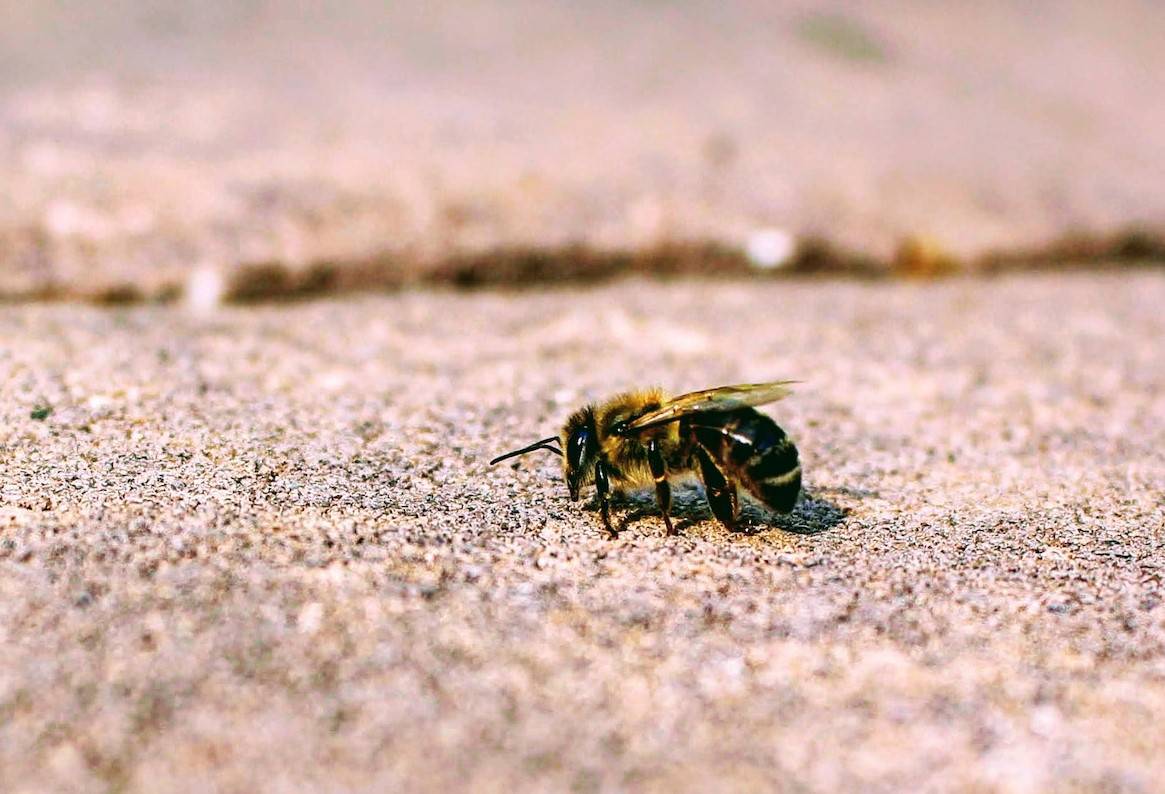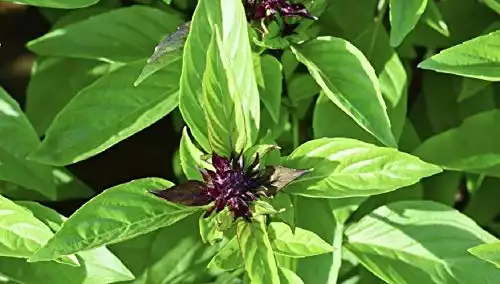When people talk of bees, the first things that cross the mind are buzzing, flying, and hives.
But did you know that there are also bees that live not in hives but underground?
What kind of bees burrow under the ground?
Do Bees Really Live in the Ground?
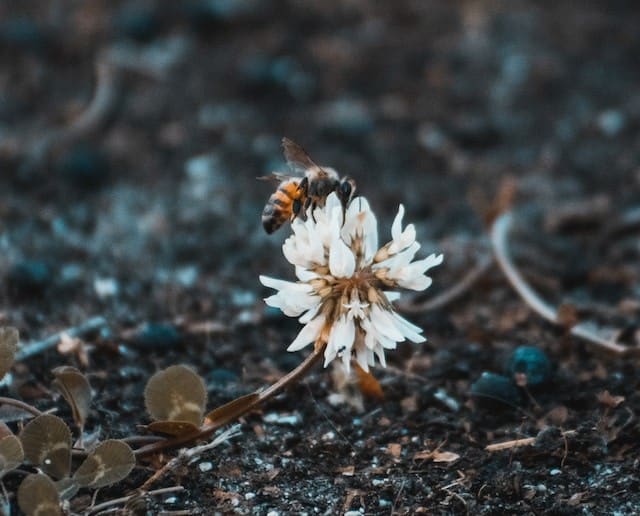
More than 20,000 bee species thrive globally. Out of this number, around 70% live on the ground. These bees that live in the ground are referred to as ground-nesting bees or ground bees.
These bees vary in type, color, and size. Despite the differences, most bees that live on the ground are solitary species and live their lives on their own. However, they do live close together and do not mind having a close-by neighbor.
They burrow into dry soil and create around half a foot of an underground tunnel. In there, females lay their eggs and store nectar and pollen for food and to feed their young.
Do Ground Bees Live in Hives Underground?
The majority of these ground-nesting bees do not live in hives situated underground. They build nesting tunnels.
They prefer living in well-drained soils with minimal organic material. Usually, their nesting locations are situated on grounds that have enough exposure to the morning sun.
A telltale sign of nesting tunnels underground is small hills of soil or dirt mounds around the nest’s entrance. When you see one of these, it is most likely that a ground bee nests and lives down under.
Types of Bees that Live on the Ground
1.) Colletes inaequalis or Plasterer Bee

The Colletes inaequalis or Plasterer Bee is one of the most common ground bees. It is a striped bee with a black abdomen and black-and-tan stripes on its body.
Its tan-colored head tops a fuzzy body that is shaped like that of a honey bee and is around half an inch long.
Also known as polyester bees, they prefer burrowing in well-drained and sandy soil with minimal organic matter.
2.) Leafcutter bees (Megachile spp)
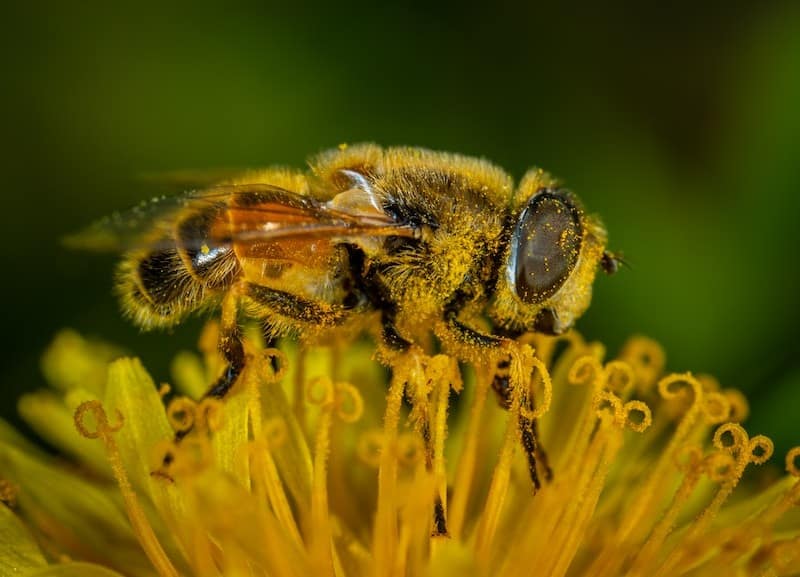
Female leafcutters are bigger than their male counterparts. The former would have a triangular-shaped abdomen with a pointed end. The latter has smaller and pointed abdomens and longer antennae.
While they may look like honeybees, the leafcutter has a larger head. Also, leafcutters transport pollen by making them stick to their abdomen (unlike honey bees that use their legs). When seen from afar, this makes this bee look like it has a yellow-colored butt.
Named after their habit of clipping off leaves to line their nests, the leafcutter bees find it attractive to live in spaces between stones, earthen banks, decaying wood, and abandoned beetle holes.
They can live in any range of habitats, from your garden to coastal dunes and even deserts.
3.) Mason bees (Osmia spp)

Mason bees are native bees commonly found in the United States. Blue-black in color, these bees are smaller than the honey bees and look more like a housefly.
Mason bees may also be striped but with finer lines. However, these lines are not yellow or reddish. Rather, the stripe lines follow the color of the bee’s skin, which can be blue, brown, black, or even dark green.
The mason bee prefers to build its home on the hollow stems of any plant or take up a tunnel or hole created by other burrowing insects.
They are commonly called mason bees due to the fact that they love to build their underground nests by sealing them with mud.
4.) Alkali bees (Nomia melanderi)
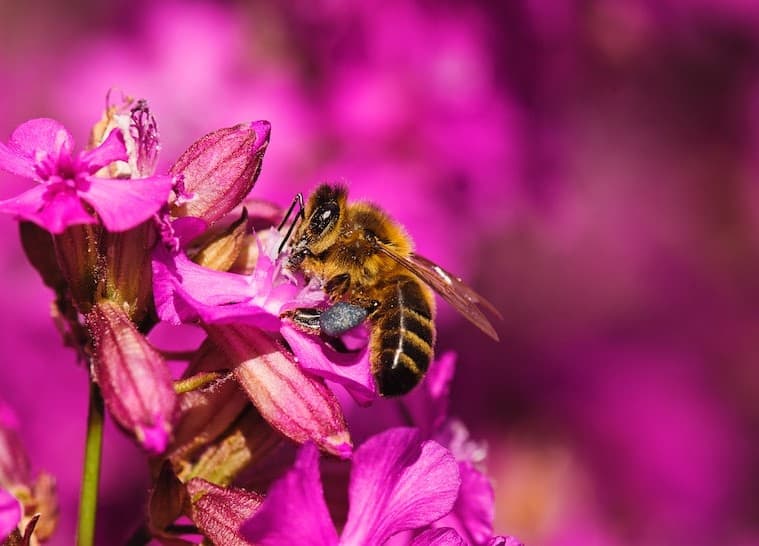
They may look like honey bees with their yellow stripes, but Alkali Bees are slightly smaller in size.
Their black abdomens are highlighted with luminous yellow stripes made of enameled scales.
Common in the southwestern and western parts of the United States, they prefer living in salty soils.
5.) American Bumblebees (Bombus pensylvanicus)
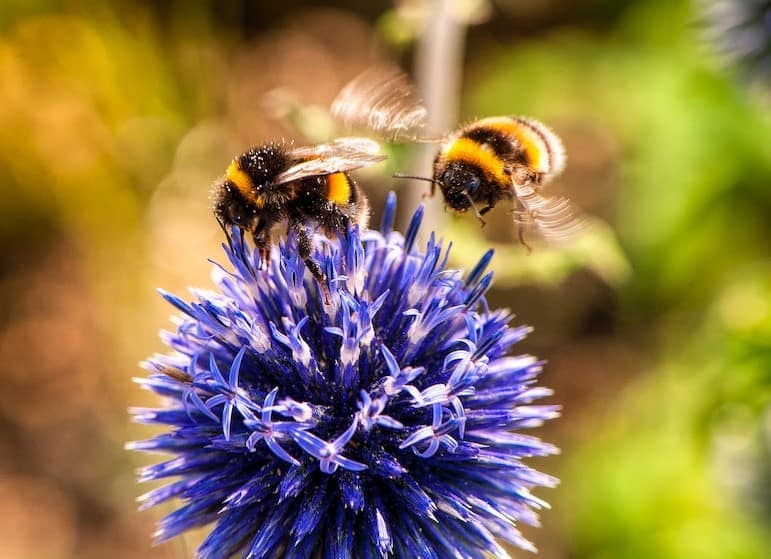
Bumble bees may look like honey bees, but there are surely enough differences. Bumblebees have rounded, fat bodies with soft hair that makes them look fuzzy.
With a wide variety of bumblebee species, these bees come in different looks and colors. Most of these bees come in bold colors of yellow and black stripes.
Unlike other ground nesters, Bumblebees are social bees and may build hives underground. Bumblebees can live above or under the ground, but most prefer living in the ground.
These bees are attracted to vacated rat holes and rodent burrows and under sheds that are indirectly under the heat of the sun. Above ground, they can build nests in tree holes, compost piles, or thick grasses.
6.) Halictid Bees or Sweat Bees (Lasioglossum spp)

Halictid bees, also known as Sweat Bees, are abundant worldwide, especially in regions with temperate climates. These bees vary in appearance, with most being slender in size and dull black or brown to metallic black in color.
Some may be metallic blue, green, or purple in color. They are usually small bees with sizes ranging from a quarter of an inch to almost an inch long.
Female sweat bees dig holes in the ground to store nectar, pollen, and their eggs.
7.) Digger or mining bees (Centris pallida)

The Digger Bees or Mining Bees, one of the many native bees, are around half a centimeter to one centimeter long. They may come in dark grey or shiny metallic green colors with yellow, rust-brown, or white marks.
Female miner bees are fuzzy and hairy, which allows them to transport pollen back to their nesting hole.
These bees are primarily inhabitants of dry and shady areas where there are minimal grasses in the desert climates and the western part of the United States. In some parts of the U.S., these bees are known as chimney bees.
FAQS on Ground-Nesting Bees
Why are these bees called ground bees?
These ground-nesting bees are also called ground bees due to the fact that they are fond of excavating nesting tunnels on the grounds.
70% of the bee species create burrows underground, and they are collectively called ground bees. These ground bees nest and lay eggs around 6 inches below the ground.
What are the signs of the presence of ground bees?
If you see mounds of soil with entrance holes in barren areas of your lawn, most likely, there are ground bees living underground.
You will also know that there are ground bees in the area when bees hover close to the ground (as if looking for a hole or protecting one from other insects).
Lots of ground bee nests can look like dirt piles. Hence, other people do not like these bees around.

What Attracts Ground Bees to Yards?
The right type of soil (dry and bare) and appropriate climatic conditions (temperate) attract ground bees to your lawn. The presence of flowers and flowering crops adds to the appeal of these areas to these bees.
In some cases, the presence of abandoned rodent burrows provides immediate shelter and residence for these bees.
Are Ground Bees Aggressive?
Ground bees are NOT aggressive insects. Generally, they are timid and docile bees that would not attack you unless they feel threatened.
When their nests are disturbed, female ground nesters will attack and sting. When ground bees sting you, immediately seek medical attention, especially when you experience an allergic reaction.
Do underground bees sting?
Male ground bees, like most bee species, do not have stingers. They may look active and aggressive as they are a bit territorial but will not sting.
On the other hand, female ground bees may not be territorial but would not hesitate to sting if you disturb their nest site or provoke them. When left alone, they rarely sting.
Do Ground Nesting Bees Produce Honey?
Ground-nesting bees do NOT produce honey. Unlike honeybees, these bees gather nectar to feed themselves and their young and not for the production of honey.
Should I get rid of Ground-Nesting Bees?
While ground-nesting bees may be a bother to you, they play an important role in the ecosystem. They are great helpers in enhancing every crop harvest as they are active pollinators.
Some farmers and gardeners even keep these ground bees to help with their crops and to produce a better harvest.
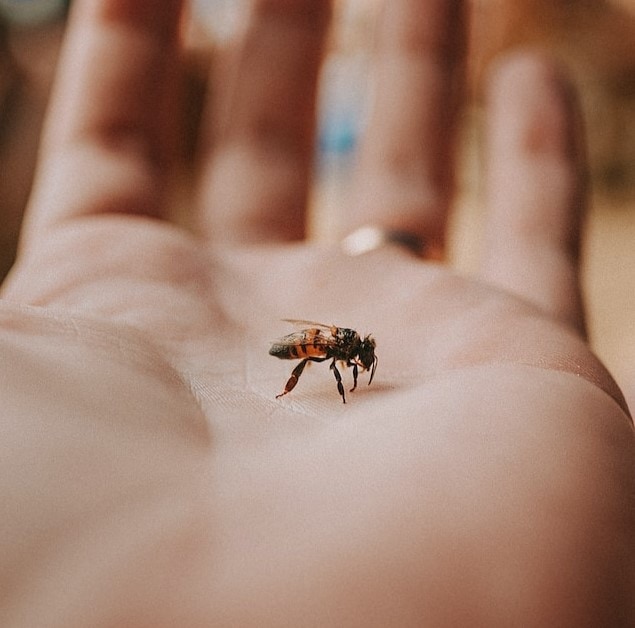
What are the benefits of having ground bees in the yard?
Having ground bees in the yard has its benefits. During the spring and summer, these bees are active and great pollinators.
They also create nesting tunnels in the ground. This burrowing activity helps aerate the soil, allowing for nutrients and water to easily pass through, improving soil health.
Are Ground bees beneficial pollinators?
Yes, ground bees are excellent pollinators. At the start of early spring, these six-legged creatures become active. They love pollinating spring flowers. This habit enhances the ecosystem and improves crops.
Should You Kill Ground Bees?
As these bees are excellent pollinators and help in the ecosystem, it is best NOT to kill these ground bees.
They seldom sting, and as long as you leave them alone, they will cause you no harm. So, there’s really no need to kill them. Besides, if you really need to get rid of these bees, there are other ways besides killing them.
How do you get rid of the bees that live in the ground?
Killing ground bees is not the solution to getting rid of them. There are several eco-friendly ways of getting rid of these burrowing bees WITHOUT killing them. The use of insecticides and pesticides is not advised as it can harm other beneficial insects in the environment as well.
Here are some of the friendly ways to get rid of ground bees:
1.) Cover the entrance of their nesting tunnels
At the start of early spring, the ground nesters would be out of their nesting burrows to forage on pollen and nectar. During this time, when the bees are out, cover the entrance of their nesting holes with soil and place a large stone on it. When it was time to come home, these bees would no longer find the entrance and would move on to look for another nesting ground.
2.) Use non-toxic bee repellant
There are a few spices we use at home that bees particularly do not like. Making a bee repellant out of this would keep the bees away without killing them. Some of the spice smells that bees are not attracted to are peppermint, cayenne pepper, and cinnamon. All you have to do is mix a liter of water, two tablespoons of

Vinegar spray (vinegar and water mixture in a 1:1 ratio) can also help repel ground bees. Use the same application mentioned above. However, be careful in using this method, as vinegar can harm other plants.
3.) Keep the soil moist
Water and keep the soil moist daily to discourage ground insects from living on your lawns. Ground-nesting bees prefer dry and bare soil.
A constantly moist soil would not be a good thriving ground for them.
4.) Grow plants that are natural bee repellants
One way of getting rid of ground bees is to plant flowers and shrubs that these bees do not particularly like. Some farmers and gardeners have reported that these plants act as bee repellants:
- Red geraniums
- Marigolds
- Peacher Plants
- Mint
- Basil$2.19See on AmazonWe earn a commission if you make a purchase, at no additional cost to you.07/27/2024 01:42 am GMT
- Lemon
- Wormwood
- Cucumbers$5.99See on AmazonWe earn a commission if you make a purchase, at no additional cost to you.07/27/2024 01:37 am GMT
- Eucalyptus
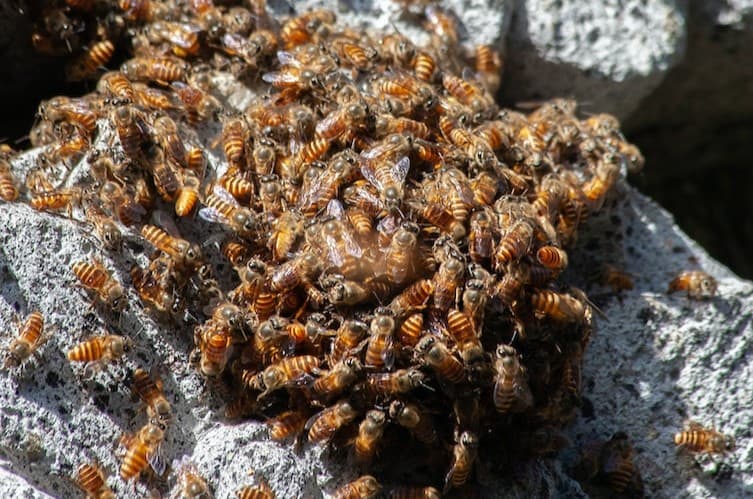
How to Help Protect Ground Bees
If you see an entrance for an underground nest, leave it undisturbed, at least not until spring. Avoid watering the area so as not to disturb our six-legged helpers.
Help keep mulch away from the entrance of the bee holes. It will encourage the ground bees to come back home after foraging for food.
Also, avoid using pesticides and insecticides on your lawns and crops, as it will also harm them.
